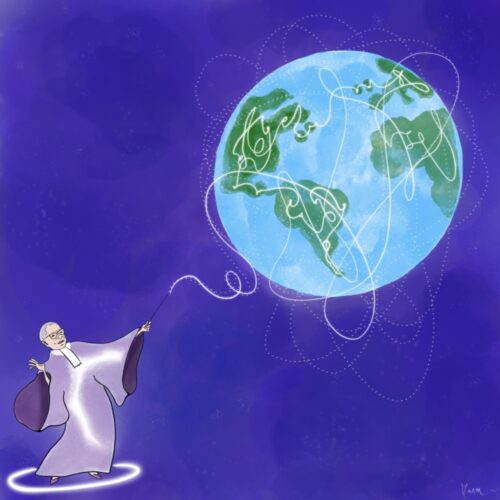Ruth Bader Ginsburg Remembered at City College
By Starr Wilson
swilson3@mail.ccsf.edu
Her Honor, Ruth Bader Ginsburg, the Supreme Court’s second female justice and first Jewish female justice of the United States from 1993 until her death, is remembered at City College for promoting equal rights.
At 87 years old, she “was making plans to live” said Sanford Greenburg. She died due to complications of pancreatic cancer on Rosh Hashanah, the Jewish New Year. She was born March 15, 1933, in Brooklyn, New York, and died September 18, 2020, in Washington, D.C.
She had two children, Jane C. Ginsburg, and James Steven Ginsburg. She was married to Martin D. Ginsburg from 1954 to 2010, who died from cancer. She was nominated by President Bill Clinton and was viewed as a moderate judge who was a consensus builder at the time of her nomination.
As a judge, Ginsburg was vocal in favor of gender equality, the rights of workers, and the separation of church and state. She said during an interview for CNN, “One lives not for oneself but for one’s community.”

Ginsburg also stated, “Fight for the things that you care about, but do it in a way that will lead others to join you.”
Women’s and Gender Studies Department and Project SURVIVE Coordinator Adele Failes-Carpenter, said, “Project SURVIVE seeks to end all forms of power abuse and Ruth Bader Ginsburg’s promotion of equal rights for women has done an enormous amount of work to dismantle the conditions that allow gender-based violence to go unchecked. She helped to curb employment discrimination based on gender and pregnancy, to extend women the rights to open bank accounts and lines of credit, and to protect the right to an abortion.”
Politico magazine commented, “It goes back to the years as head of the ACLU Women’s Rights Project, when, starting in 1971, she pivoted the entire structure of the Fourteenth Amendment to cover equal rights for women. Her first case, Reed v. Reed, came a mere 10 years after the Supreme Court had ruled explicitly that equality was, essentially, ‘No Girls Allowed’ working in the footsteps of Thurgood Marshall, she slowly and methodically pulled the Constitution toward a larger circle of equality.”
Failes-Carpenter added, “The best way we can stand by the legacy of Ruth Bader Ginsburg is to ensure…that there is a movement from below to protect reproductive rights, voting rights, and end abuses of power. If we believe in and build our own power from below to counter abuses of power from above, we will be honoring Ruth Bader Ginsburg’s legacy. And by building up our collective power, we ensure that no single person is saddled with the weight of defending our democratic future.”
Politico Magazine said, “Justice Ginsburg knew that democracy may be the best form of government, but recognized that our democracy comes with two serious weaknesses: one, a serious risk that majorities will disregard the rights and interests of members of communities they regard as the “other,” and; two, that majorities will manipulate the electoral process in order to ensure that they will retain control of the legislative process.”
